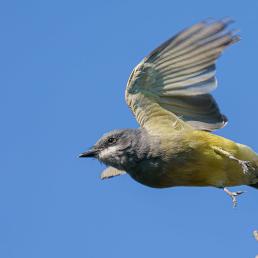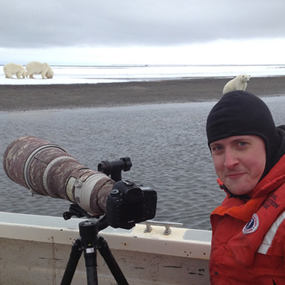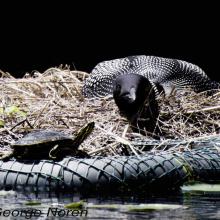

Join BirdNote tomorrow, November 30th!
Illustrator David Sibley and actor H. Jon Benjamin will face off in the bird illustration battle of the century during BirdNote's Year-end Celebration and Auction!
By December, an array of diving birds that nested at far northern latitudes are wintering on temperate waters across the continent. If we could watch them under water, we'd see this Common Loon racing like a torpedo. A goldeneye dives under water and swims about 10 feet from the surface, while scoters get down to 30 feet in search of clams and mussels. But if one bird stands out as the most beautiful diver, it has to be the Long-tailed Duck. Propelling itself beneath the surface with its wings, it seems to fly through the water, sometimes to depths of more than 60 feet!
BirdNote®
Diving Birds — Below the Surface
Written by Bob Sundstrom
This is BirdNote.
[Long-tailed Duck call, http://macaulaylibrary.org/audio/131469]
By December, an extravagant array of diving birds that nested at far northern latitudes now bob on temperate waters across the continent. Loons, grebes, and ducks—Goldeneyes, Buffleheads, Scoters, and Mergansers—float on the water’s surface. Then they're lost to us, as they disappear below. [Common Loon vocalizations, http://macaulaylibrary.org/audio/926]
If we could watch them under water, we'd see Common Loons racing like torpedoes, propelled by large feet set far to the rear of their bodies. Loons feed mostly within 20 feet of the surface, but can reach 200 feet and stay under for up to three minutes.
Most diving ducks, though, are down and up again in less than a minute. Searching for food, they swim with their feet, sometimes using their canted wings to steer. A goldeneye dives under and swims about 10 feet from the surface, while scoters get down to 30 feet in search of clams and mussels.
But if one bird stands out as the most beautiful diver, it has to be the Long-tailed duck. Propelling itself beneath the surface with its wings, it seems to fly through the water, sometimes to depths of more than 60 feet. [Long-tailed Duck call, http://macaulaylibrary.org/audio/131469]
Support for BirdNote comes from American Bird Conservancy and Bringing Back the Birds, a photo book by Owen Deutsch on the importance of protecting birdscapes. Available at amazon.com.
###
Bird sounds provided by The Macaulay Library of Natural Sounds at the Cornell Lab of Ornithology, Ithaca, New York. Long-tailed Duck [131469] recorded by Gerrit Vyn; Common Loon [926] recorded by P P Kellogg.
BirdNote's theme music was composed and played by Nancy Rumbel and John Kessler.
Producer: John Kessler
Executive Producer: Dominic Black
© 2015 Tune In to Nature.org December 2014/2017/2020/2022 Narrator: Michael Stein
ID# diving-01-2014-12-22 diving-01









